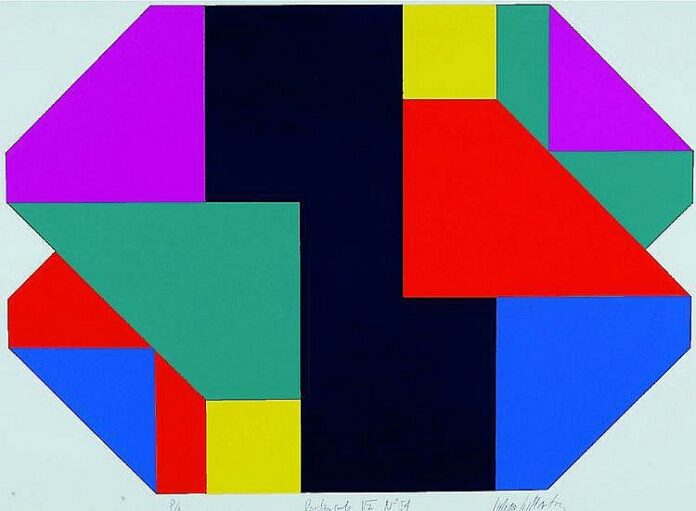Julián Gil, master of abstraction
“Concrete art is more than geometric painting. It is an art that doesn’t start from the outside, like figurative painting, but starts from the inside of the artist”.
Julián Gil
Born in 1939
The painter Julián Gil has worked for decades on his geometric-concrete creations. These have never lost their validity, even serving as inspiration for future generations of abstract artists.
One of the main Spanish exponents of concrete art, and still active, he began his studies in 1954 at the Escuela de Artes y Oficios in Logroño and in 1958 he continued his training at the Escuela de Bellas Artes de San Fernando in Madrid. In 1963 he began to combine his professional career with artistic teaching at the Faculty of Fine Arts of the Complutense University in Madrid, where he completed a doctorate. He was inspired by the artistic culture of the time. The 1950s can be said to have been dominated by Abstract Expressionism, a form of painting that prioritised expressive brushstrokes and expressed ideas about organic nature, spirituality and the sublime. Much of the focus was on the formal properties of painting, and ideas of action painting were conflated with the political freedom of the United States society as opposed to the strict nature of the Soviet bloc. Important artists of the Abstract Expressionist Generation included Jackson Pollock (who innovated his famed drip, splatter and pour painting techniques), Willem de Kooning, Mark Rothko, Frank Kline, Barnett Newman, Clyfford Still and Adolph Gottlieb. It was a male dominated environment, but necessary revisionism of this period has emphasised the contributions of female artists such as Lee Krasner, Joan Mitchell, and Louise Bourgeois, amongst others.
He was one of the members of the “Nueva Generación” group promoted by Juan Antonio Aguirre that emerged in the sixties, along with other painters such as Gordillo, Yturralde and Asins. Starting in the 1980s, he became part of what was called the “No Group” in Madrid after the exhibition “Las ocho caras del cubo” (“The Eight Faces of the Cube”) at the Galería Ovidio, in which he participated with other prominent Spanish constructivist and concrete art proponents, such as Soledad Sevilla, Waldo Balart, Tomás García Asensio and Cruz Novillo.
His canvases are completely removed from any representation of nature, they are not even conceived as the materialization of an imagined image, but rather are built based on the use of mathematics and colour theory. Moreover, the artist’s production is made up of different series in which he takes a system or formula as a reference, developing different possible chromatic and formal variations with surprising results, thanks to an acute perception of colour and a careful analysis of forms.
His work is represented in major public and private collections at national level, and internationally he has exhibited alongside some of the great representatives of constructivism and concrete art, such as the Germans Diet Sayler, Hartmut Böhm, and Manfred Mohr, the Swiss artist Rita Ernst and the Briton John Carter.




